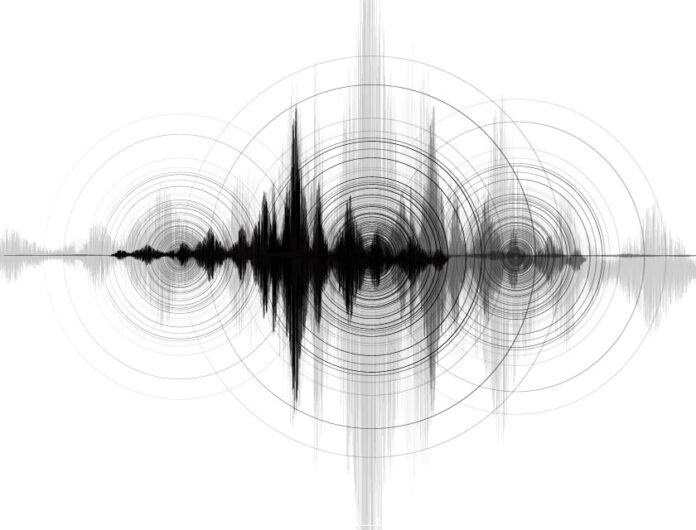Un nuevo enfoque de inteligencia artificial podría ayudar a predecir la ubicación de las réplicas después de un terremoto
An terremoto is a phenomenon caused when rock underground in the De la tierra crust suddenly breaks around a geological fault line. This causes rapid release of energy which produces seismic waves which then make the ground shake and this is the sensation we fell during an earthquake. The spot where the rock breaks is called focus of the terremoto and place above it on ground is called ‘epicentre’. The energy released is measured as magnitude, a scale to describe how energetic was an earthquake. An earthquake of magnitude 2 is barely perceptible and can be recorded only by using sensitive specialized equipment, while earthquakes of more than magnitude 8 can cause the ground to noticeably shake very hard. An earthquake is generally followed by many aftershocks occurring by a similar mechanism and which are equally devasting and many times their intensity and severity is similar to the original earthquake. Such post-quake tremors occur generally within the first hour or a day after the main earthquake. Forecasting spatial distribution of aftershocks is very challenging.
Los científicos han formulado leyes empíricas para describir el tamaño y el tiempo de las réplicas, pero determinar su ubicación sigue siendo un desafío. Investigadores de Google y la Universidad de Harvard han ideado un nuevo enfoque para evaluar terremotos y pronosticar la ubicación de réplicas utilizando tecnología de inteligencia artificial en su estudio publicado en Naturaleza. Usaron específicamente el aprendizaje automático, un aspecto de la inteligencia artificial. En el enfoque de aprendizaje automático, una máquina 'aprende' a partir de un conjunto de datos y, después de adquirir este conocimiento, puede usar esta información para hacer predicciones sobre datos más nuevos.
Los investigadores analizaron primero una base de datos de terremotos globales utilizando algoritmos de aprendizaje profundo. El aprendizaje profundo es un tipo avanzado de aprendizaje automático en el que las redes neuronales intentan imitar el proceso de pensamiento del cerebro humano. A continuación, apuntaron a poder pronóstico aftershocks better than random guessing and try to solve the problem of ‘where’ the aftershocks will occur. Observations collected from more than 199 major earthquakes around the world were utilized consisting of around 131,000 mainshock-aftershock pairs. This information was combined with a physics-based model which describing how La Tierra would be strained and tense after an earthquake which will then trigger aftershocks. They created 5 kilometer-square grids within which system would check for an aftershock. The neural network would then form relationships between strains caused by main earthquake and the location of aftershocks. Once neural network system was well-trained in this manner, it was able to predict location of aftershocks accurately. The study was extremely challenging as it used complex real-world data of earthquakes. Researchers alternatively set up artificial y una especie de terremotos "ideales" para crear pronósticos y luego examinar los pronósticos. Al observar la salida de la red neuronal, intentaron analizar qué diferentes 'cantidades' es probable que controlen el pronóstico de las réplicas. Después de hacer comparaciones espaciales, los investigadores llegaron a la conclusión de que un patrón típico de réplica era físicamente "interpretable". El equipo sugiere que una cantidad llamada segunda variante de tensión de esfuerzo desviador, simplemente llamada J2, es la clave. Esta cantidad es altamente interpretable y se usa de manera rutinaria en metalurgia y otros campos, pero nunca antes se había usado para estudiar terremotos.
Aftershocks of earthquakes cause further injuries, damage properties and also hinder rescue efforts therefore predicting them would be life-saving for humanity. Real time forecast may not be possible at this very moment as the current AI models can deal with a particular type of aftershock and simple geological fault line only. This is important because geological fault lines have different geometry in diverse geographical location on the avión. So, it may not be currently applicable to different type of earthquakes around the world. Nevertheless, artificial intelligence technology looks suitable for earthquakes because of n number of variables which need to considered when studying them, example strength of the shock, position of tectonic plates etc.
Las redes neuronales están diseñadas para mejorar con el tiempo, es decir, a medida que se introducen más datos en un sistema, se produce más aprendizaje y el sistema mejora constantemente. En el futuro, dicho sistema podría ser parte integral de los sistemas de predicción utilizados por los sismólogos. Los planificadores también podrían implementar medidas de emergencia basadas en el conocimiento del comportamiento de los terremotos. El equipo quiere utilizar tecnología de inteligencia artificial para predecir la magnitud de los terremotos.
***
{Puede leer el trabajo de investigación original haciendo clic en el enlace DOI que figura a continuación en la lista de fuentes citadas}
Fuentes)
DeVries PMR y col. 2018. Aprendizaje profundo de los patrones de réplicas posteriores a grandes terremotos. Naturaleza560 (7720).
https://doi.org/10.1038/s41586-018-0438-y
***






































